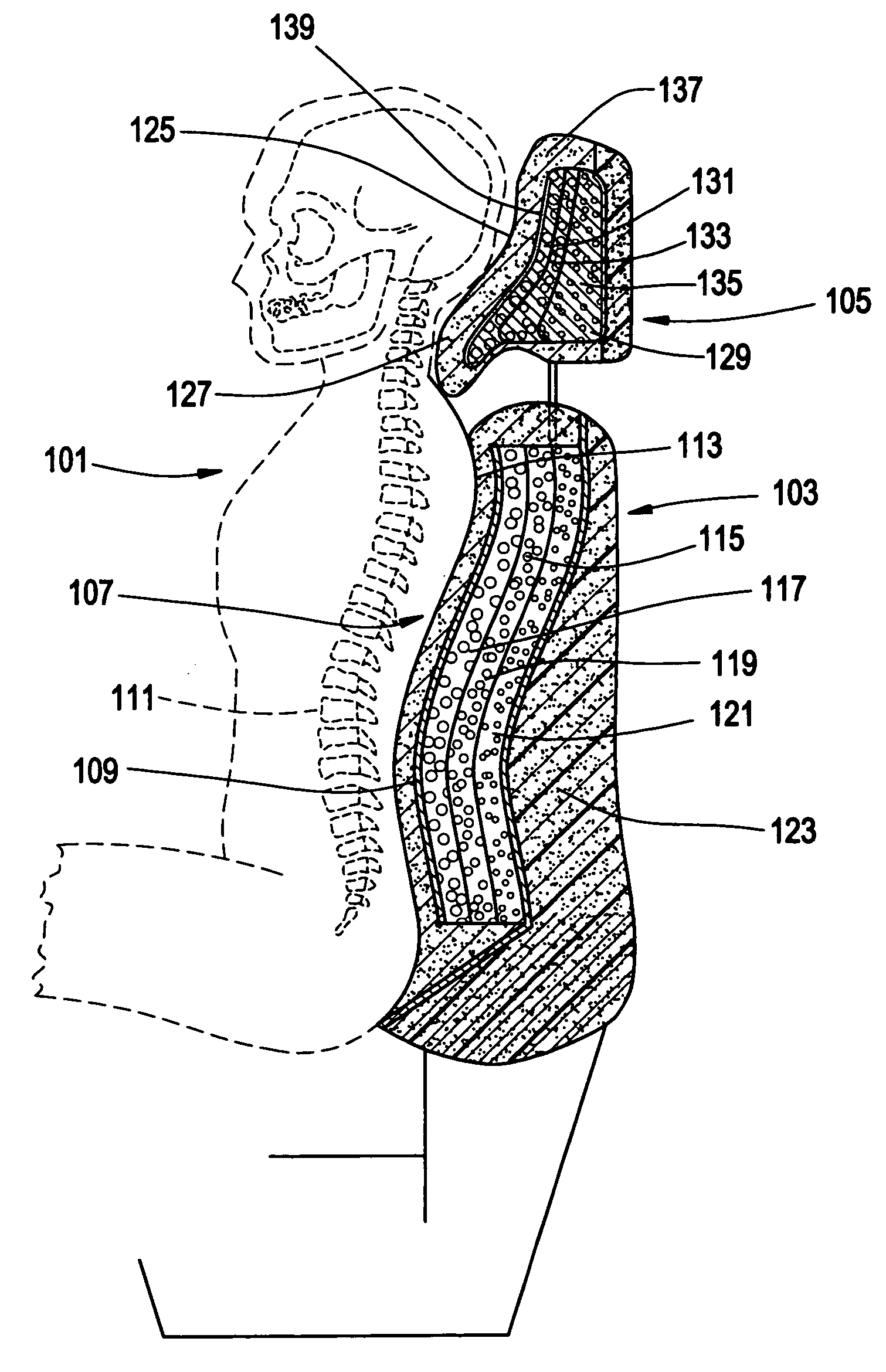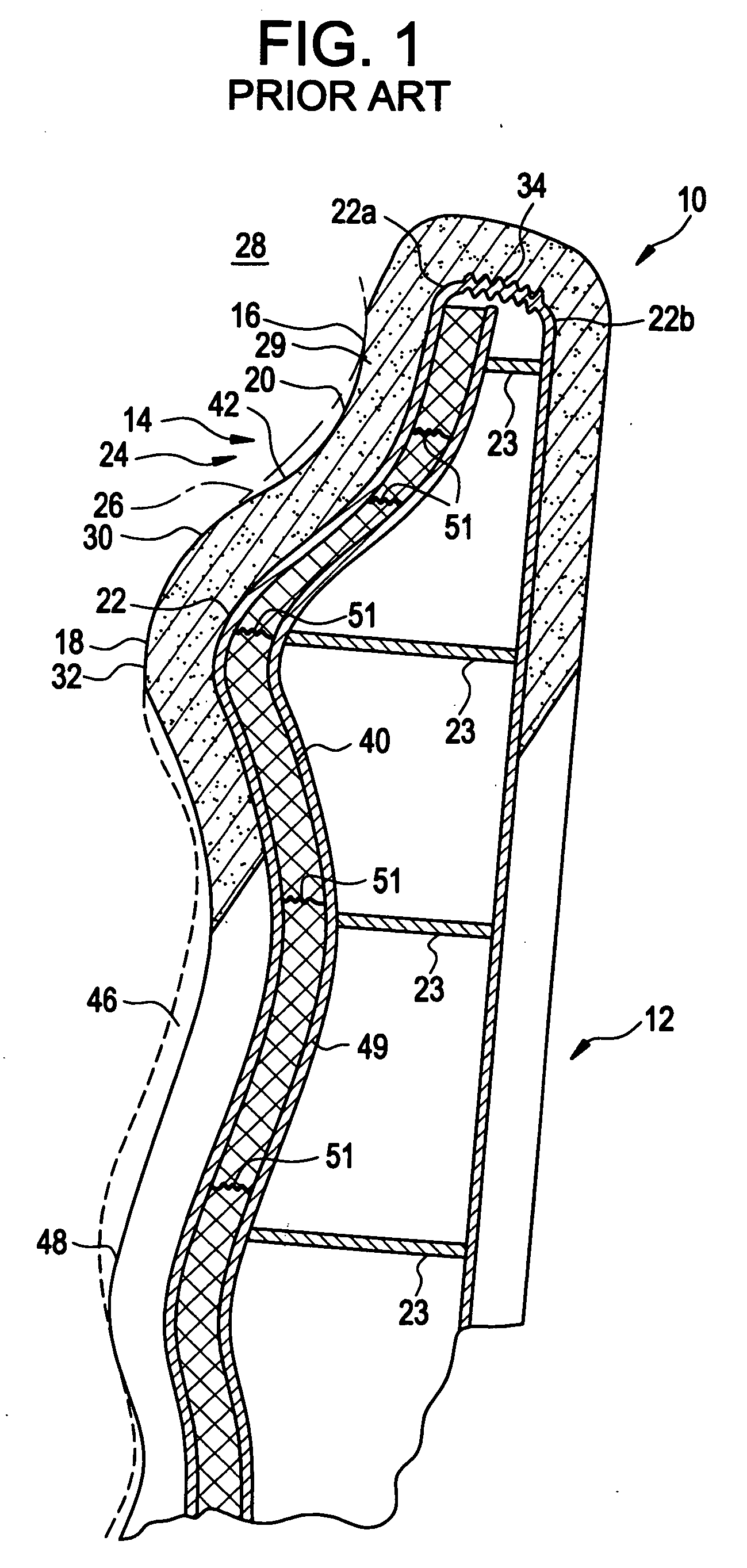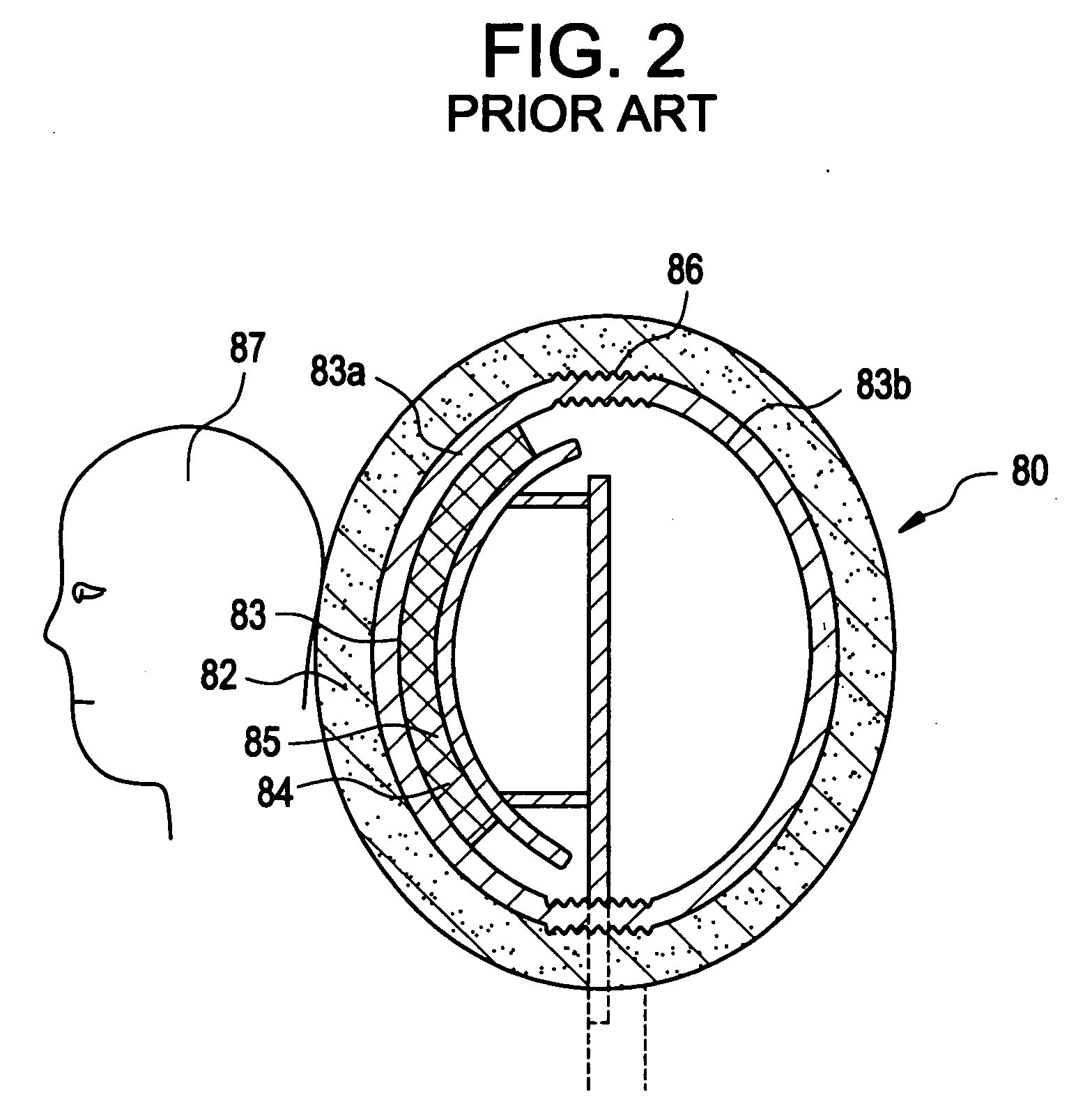Energy absorbing support for vehicular passengers
a technology for vehicular passengers and support rods, applied in the field of seat cushions, can solve the problems of causing whiplash injury, unable to clearly demonstrate the benefits of good head restraint positioning, and certain faulty premises remain
- Summary
- Abstract
- Description
- Claims
- Application Information
AI Technical Summary
Benefits of technology
Problems solved by technology
Method used
Image
Examples
Embodiment Construction
[0047] In FIG. 3 a schematic cross-sectional view appears depicting a passenger 101 seated in a vehicle in which the passenger is rearwardly supported by a seat back generally designated at 103 and a head-neck restraint 105, each being in accordance with the present invention. Seat back 103 thus incorporates a thoracic-lumbar restraint 107 which includes a rigid plate 109, e.g. of a rigid plastic or metal, having a shape which substantially conforms to the thoracic-lumbar spinal portion 111 of passenger 101. Plate 109 is overlaid by a conventional comfort material 113 such as a soft foam or covered upholstery layer or the like against which the passenger actually rests. Directly behind plate 109 is an energy aborbing zone 115 consisting of a series of overlying layers 117, 119 and 121. In general terms these energy absorbing layers function in the manner disclosed in my aforementioned U.S. Pat. No. 5,580,124; i.e. upon a rear impact at the vehicle in which passenger 101 is seated, t...
PUM
 Login to View More
Login to View More Abstract
Description
Claims
Application Information
 Login to View More
Login to View More - R&D
- Intellectual Property
- Life Sciences
- Materials
- Tech Scout
- Unparalleled Data Quality
- Higher Quality Content
- 60% Fewer Hallucinations
Browse by: Latest US Patents, China's latest patents, Technical Efficacy Thesaurus, Application Domain, Technology Topic, Popular Technical Reports.
© 2025 PatSnap. All rights reserved.Legal|Privacy policy|Modern Slavery Act Transparency Statement|Sitemap|About US| Contact US: help@patsnap.com



